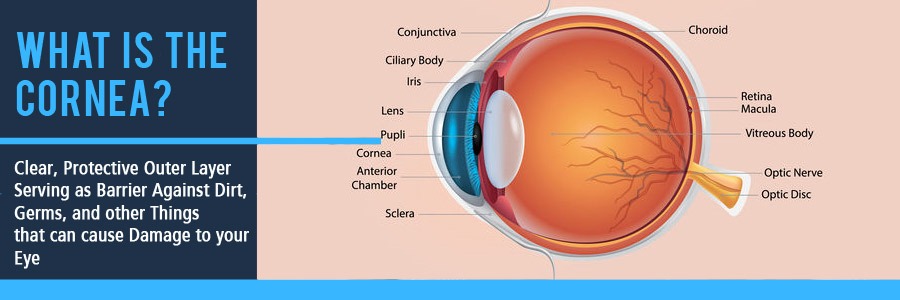
Personalized Eyewear Consultation by Appointment Only (215) 443-7706
- Home
- About
- Products
- Services
- Lens Lab
- Vision Care
- Newsletter
- Contact Us
Menu- Home
- About
- » Doug Wohl
- » Awards
- » Reviews
- Products
- » Bifocals
- » Computer Glasses
- » » Computer Vision Syndrome - Digital Eye Strain
- » Contact Lenses
- » » Are Contacts Right For You
- » » Guidelines for Contacts Wear and Care
- » » Instructions for Soft Contacts
- » Eyeglass Frames
- » » Frame Guide - Frame Shape and Face Shape
- » » Frame Materials
- » » Eyewear Maintenance
- » » Makeup Tips When Wearing Glasses
- » » Wiley X Eyewear Frames
- » Children Eyeglasses
- » » Eyewear for Babies and Young Children 0-5 Years Old
- » » Kids Corner
- » » 10 Tips for Buying Glasses for Children
- » Occupational Eyeglasses
- » Prescription Lenses
- » » Lens Coatings and Tints
- » » » Anti Reflective Coating
- » » Replacement Lens Options
- » Progressives
- » Readers
- » Safety Glasses
- » » Eye Injuries that Could be Prevented with Safety Glasses
- » » Prescription Safety Eye Glass Feature Guide
- » Single Vision Eyeglasses
- » Sports Eyewear
- » Sunglasses
- » » UV Eye Safety
- Services
- » Eye and Vision Exam
- » » Eye and Vision Problems
- » » Glaucoma Test
- » » Vision Refraction
- » Contact Lens Exam and Fitting
- » Eyeglass Repair
- Lens Lab
- Vision Care
- » Cornea
- » Detached Retina
- » Diabetic Retinopathy
- » Dry Eyes
- » Eye and Vision Conditions
- » Fun Eye Facts
- » Eye Function and Parts Explained
- » FAQ
- » Macular Degeneration
- » Makeup Causing Eye Damage
- » Medication Side Effects to Vision
- » Optic Nerve Damage
- » Optical Terms and Definitions
- » Red Eye
- » Retina Damage
- Newsletter
- » Blue Light Blocker Glasses
- » Buying Glasses Online
- » Covid-19 Safety Practices
- Contact Us
- Home Vision Care What is the Cornea?
What is the Cornea?
The cornea is your eye’s clear, protective outer layer and serves as a barrier against dirt, germs, and other things that can cause damage. As light enters your eye, it gets refracted, or bent, by the curved edge of your cornea. This helps determine how well your eye can focus on objects close-up and far away.
The three major corneal layers are:
- Outer layer of the cornea or epithelial layer
- Middle layer termed the stroma
- Single layer of cells called the endothelium.
The curvature of the cornea plays an important role in focusing (refracting or bending) light. The normal cornea is smooth, clear, and tough and helps protect the eye from infection and foreign material.
Dry Eye
Dry eye is common and can result in cornea damage from painful erosions of the corneal surface. Aside from lubricating the eyes with artificial tears, addressing the underlying cause is important. For some patients, dryness is caused by lack of tear production, and anti-inflammatory drops such as cyclosporin (Restasis) or steroids may help.
In other cases, the dryness is due to evaporation of the tears between blinks. This occurs when your eyelids' oil glands (meibomian glands) are not functioning well. Normally, the oil from these glands coats the eye's surface and prevents tear evaporation. The oil glands' function can be improved with a combination of warm compresses, lid hygiene (for example, dilute baby shampoo lid scrubs), increased intake of omega-3 fatty acids, and for some patients, oral medication.
How to Take Care of Your Cornea
- Glasses and sunglasses with 100% ultraviolet block can protect against cornea growths that are associated with sun exposure, such as pterygium, and eye surface cancers.
- Safety glasses should be worn when warranted to prevent trauma.
- A diet rich in omega-3 fatty acids and sufficient vitamin A may help maintain a healthy tear film, thus minimizing dry eye symptoms.
- Reviewing one's family's ocular health history is helpful in looking for hereditary conditions.
- Regular eye examinations are important for detecting eye diseases at their earliest stages.
Medications that Damage the Cornea
Medications can affect your cornea:
- Amiodarone, a cardiac medication is associated with whorl-like pattern on the surface of your cornea, which can cause vision disturbance. The condition goes away when the medication ceases.
- Antihistamines. Because they are designed to dry the mucous in your nose, they dry other mucous membranes as well, such as those in your eye. Light sensitivity is another common side effect, and more rarely, changes in pupil size. You should report any pupil size changes to your doctor.
- Anti-inflammatory drugs such as indomethacin can rarely lead to whorl-like patterns on your cornea surface, but rarely causes visual symptoms.
- Anti-malarial drugs including Chloroquine, quinacrine, and hydroxychloroquine can cause changes in your cornea. Symptoms such as halos around lights, glare and light sensitivity may occur. There is no change in the person's visual acuity. Once drug therapy is stopped both subjective symptoms and objective corneal signs disappear.
- Appetite suppressants (dextroamphetamines, amphetamines, methamphetamines, and phenmetrazine compounds) may contribute to difficulty focusing the eyes, dilated pupils, and difficulty in eye convergence while reading.
- Birth control pills can lead to a higher incidence of migraine headaches, problems with contact lenses due to dry eyes, and color vision disturbances.
- Blood pressure drugs cause your body to get rid of excess fluid to give your circulatory system a break. However, in the eyes this means dry eye syndrome, sensitivity to light, and possible double and/or blurred vision in some people. Sometimes beta-blockers, such as Inderal and Tenormin, are prescribed to lower high blood pressure by the kidney's production of renin, a protein. Normally, renin stimulates the release of angiotensin II, a blood vessel constrictor that makes it more difficult for blood to flow through the arteries and thus raise blood pressure. It also causes hormone secretions that contribute to water retention (increasing the fluid amount in the blood system).
- Cocaine can lead to corneal ulcers that may be infected with bacteria or sterile.
- Digoxin, used to treat heart failure or heart irregularity. Common visual side effects are color vision changes. You may experience light flashes, blind spots, and light sensitivity.
- Minocycline, used to treat acne, may result in a pigmentation of the sclera - typically a blue-grey discoloration, worse in sunlight - which goes away with discontinuation of the drug.
- Prozac may cause double vision, dilated pupils, dry eye syndrome, and blurred vision. It can also cause eye lid infection (blepharitis), eye pain, cataracts, ptosis (drooping eyelid) glaucoma, and iritis. Discontinuing the medication is the only way to eliminate these side effects. If you take Prozac you should know that it is normal to experience these visual symptoms. Antidepressants that change how your brain processes information and changes neurological functioning, can change vision.
- Psychiatric medications, such as the phenothiazines, i.e., Chlorpromazine (Thorazine) and Mellaril (Thioridazine), in large doses can lead to pigmentation of the conjunctiva, cornea, and eyelids.
- Tamoxifen, prescribed after breast cancer treatment, can lead to crystalline deposits in your cornea.
About Wohl Optics Vision Care
Proper eyewear prescription AND fit are vital for your best vision. Fit is something that you will never get right with an online optical business. Veteran owned and operated - best in Bucks County Optical eye care shop.
How could your vision be better? What situations do you feel give you trouble when wearing eyeglasses? That is why we are here.
Exclusive Discounts
Military, Veterans, First Responders, Police, Firefighters, Ambulance all receive exclusive discounts (not combined with insurance or other discounts).
We accept most major Vision Insurance Plans.
(215) 443-7706 Phone
(215) 443-8795 FaxWohl Optics
550 Street Rd.
Warminster, PA 18974Veteran Helping Veterans - Local Bucks County, PA Independent Optician

Copyright © 2016-2022
All Rights ReservedCredit Cards Accepted

Private Consultations for your Family: Flexible hours at your convenience by appointment ONLY
Wohl Optics Regular Schedule:
Monday 10:00AM - 5:00PM Tuesday 10:00AM - 4:00PM Wednesday 10:30AM - 6:00PM Thursday 10:30AM - 7:30PM Friday 10:00AM - 6:00PM Saturday 10:00AM - 1:00PM We are offering personal appointments to everyone for the selection of eyeglasses and eyeglass adjustments. We will make every effort to accommodate your schedule. Let us know if you would like to meet at Wohl Optics outside of the above regular scheduled hours.
Service Areas
Bucks County, PA; Montgomery County, PA; Chester County, PA; Philadelphia, PA; Warminster, PA; Ivyland, PA; Warrington, PA;Furlong, PA; Warrington, PA; New Hope, PA; Southampton, PA; Bensalem, PA; Northampton, PA; Hatboro, PA; Willow Grove, PA; Huntingdon Valley, PA; Horsham, PA; Lansdale, PA; Montgomeryville, PA; Newtown, PA; Langhorne, PA; Lahaska, PA; Buckingham, PA; Yardley, PA; Chalfont, PA; Richboro, PA; Doylestown, PA; Glenside, PA; Ambler, PA; Fort Washington, PA; Churchville, PA; Norristown, PA; Washington Crossing, PA; Philadelphia, PA.
Wohl Optics 550 Street Rd. Warminster, PA 18974 (215) 443-7706 Privacy Policy HIPAA Sitemap
